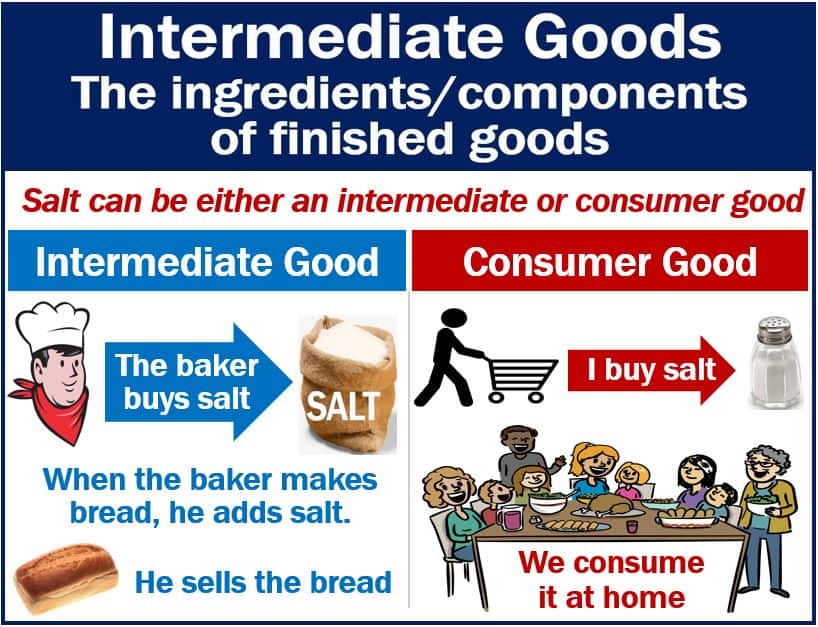Intermediate goods are items that we use to create another product. In other words, they are inputs in other products or the ingredients of finished goods. Suppliers of intermediate goods sell them to, for example, manufacturers for the inclusion in their final products.
Goods in this category are under process, such as partly-finished goods. Companies may produce and then use intermediate goods. They may also produce and then sell them.
We also call intermediate goods producer goods or semi-finished goods.
During the production process, an intermediate good may become part of a finished product. Alternatively, it may change beyond recognition in the process.
Cambridge Dictionary has the following definition of the term:
“Products that are made during a manufacturing process but that are also used in the production of other goods. Wood, steel, and sugar are all examples of intermediate goods.”
In this article, the word ‘goods’ means the same as ‘products.’
Consumer goods vs. intermediate goods
When somebody buys a consumer good, it is for their own use or consumption. When an individual or any entity purchases a consumer good, that is the end of the road for the product. That person neither uses it to make something else nor sells it.
Intermediate goods, on the other hand, have not finished their journey when somebody or a company buys them.

A product may be either an intermediate or consumer good, depending on who buys it. If I buy salt, and take it home for everybody in the household to consume, it is a consumer good.
When bakers, on the other hand, buy salt to add to their products, it is an intermediate good. It is not the end of the journey for the salt. After adding salt to bread, the baker then sells that bread.
Capital goods vs. intermediate goods
Although people and businesses buy intermediate and capital goods for the production process, the two terms are different.
Typically, a capital good does not transform during the production process. A baker’s oven, for example, is a capital good. It helps in the production of bread. However, the oven remains intact during the production process. Also, the oven is not an ingredient of bread.
Salt or flour, on the other hand, are ingredients of bread. They are consumed in the production process. Therefore, we refer to them as intermediate goods.
Intermediate goods and GDP
When economists are calculating a country’s GDP, they do not include intermediate goods.
GDP stands for gross domestic product. GDP is a measure of production that equals all the goods and services that a country or region produces.
If we included intermediate goods in a country’s GDP, we would be double-counting. We should count a final product only once. A baker buys salt, adds it to bread, and subsequently sells the bread. We include the value of the salt when calculating GDP when the baker sells the bread.
We cannot also count it when the baker buys the salt. Otherwise we would be counting it twice.
